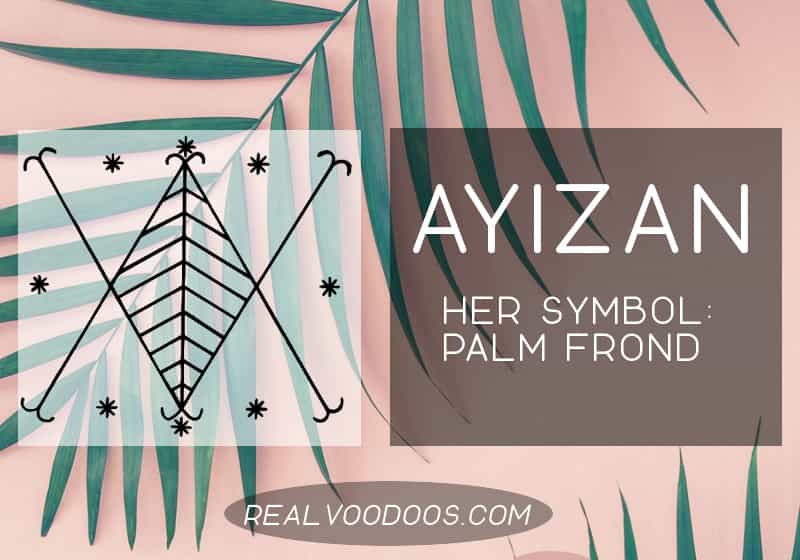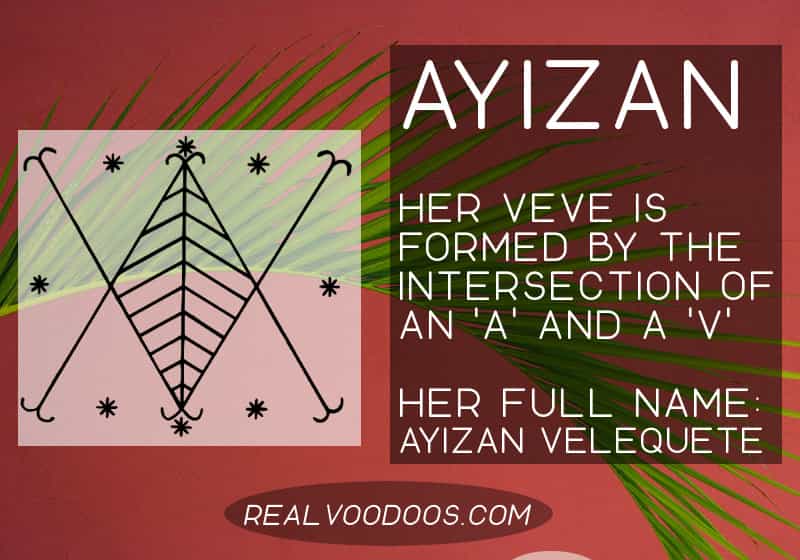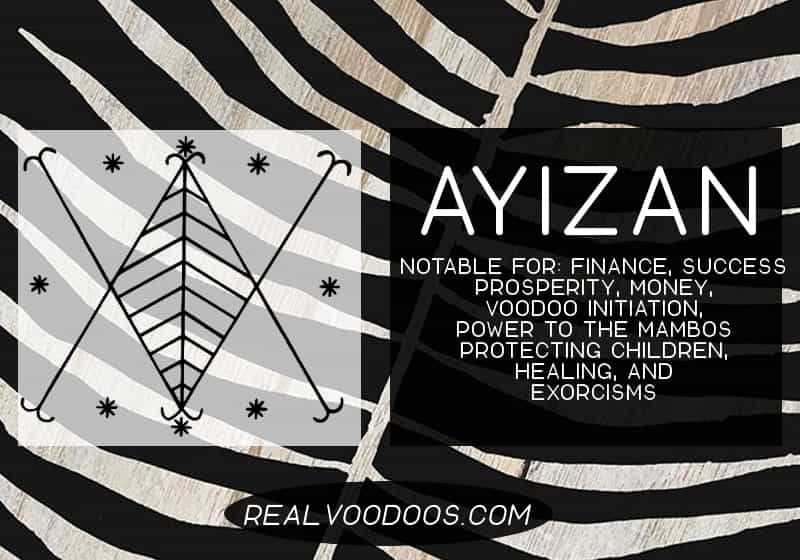The Lwa Ayizan, Queen of the Market
The Lwa Ayizan, her full name Ayizan Velequete, also called Mambo Ayizan. She is most frequently described as the Queen of the Marketplace. Ayizan holds dominion over all financial wealth, success and commerce. Ayizan is a Lwa called upon for business help and material prosperity. People who seek to succeed in businesses and people who seek be treated fairly in business petition Ayizan’s help.
The veve of Ayizan is an intersecting A and V, the initials of Ayizan Velequete. She is said to be the oldest, or at least one of the oldest, of the Lwa. For this reason she is given offerings first in any Voodoo ceremony. Even in rituals where she is not called upon directly it is common to provide an offering for Ayizan. As a Lwa of the crossroads responsible for opening doors, she is called upon in many rituals.
When Ayizan appears she often takes the form of a market woman. Her appearance is almost always elderly, but she can be seen as a young woman as well. She wears a white dress. The pockets of her dress are filled with small market consumables, like pieces candy. Ayizan gives these treats out to children. Ayizan loves children and is said to protect and watch over them. As a protector of children, Ayizan hates those who would hurt or harm children. She is often sought when someone has wronged a child.
Although Ayizan’s spiritual influence is very strong, it is also subtle. When she mounts, or rides, Mambos and Houngans during a rite, they may initially be unaware of it. When she works her influence or power in the world it can be difficult to detect – but only at first. Ayizan is one of the most powerful Lwa and when she is at work it isn’t long before you can tell.
Ayizan is said to be the first Mambo, or the first Voodoo Priestess. This means that Ayizan is one of the first spirits responsible for granting spiritual power to humans. We must thank her for this. Ayizan is therefore a patron Lwa of Mambos. Not only is she a patron Lwa of Mambos, but she is a patron Lwa of all new Voodoo initiates. In Voodoo initiation rites, or kanzo, Ayizan always holds a central role. She is the Lwa who oversees the lave tet, the washing of the head, or the first baptism ritual of Voodoo.
As the wife of Legba, a Lwa of the crossroads, it is natural that Ayizan holds such a central role in initiation and magic. The crossroads, both as a physical location and a spiritual symbol, are used in rites to “open pathways.” This means opening the door to specific results and also opening the way for any given spell to work. Ayizan is responsible for opening the gate to Voodoo initiation and to advanced initiation as a Mambo. She is in this context one of the gatekeeper Lwa. Ayizan is one who can open or close doors for you.
Not only is Ayizan the Lwa of the marketplace, but she is the Lwa of all open public spaces. For this reason Ayizan is sometimes seen as the Lwa who holds sway in government buildings. She is also said to be a Lwa of soft waters, and like Legba a Lwa of doors, gates and roads. In Yoruba, “the Market” is a euphemism for the entire Earth or material world. This is how Ayizan holds the dual roles. She is both a Lwa of the literal marketplace and of the metaphorical marketplace – the world – all open spaces.
Ayizan’s symbol is the palm leaf or palm frond. This is one of the reasons the palm leaf is used centrally in Voodoo initiation rites. During a traditional initiation, the entire peristyle is covered in palm fronds. If the initiation is indoors, the palm fronds are placed on the ceiling. A brooch of palm fronds are worn by devotees to Ayizan during ceremonies to her. The Haitian royal palm is specifically the type used.
Ayizan, along with Legba and Loko, is one of the supreme healers in Voodoo. The word “Ayizan” in traditional Yoruba was literally “to heal,” while “Ayizan” in Haitian Creole is used both as name for the Lwa and as a description of healing. To use an example from a common expression: “Ayizan lwa dun iwo.” This means “illness can be cured.” Ayizan is called upon to heal illness and to drive out evil spirits. She is petitioned to cleanse and to perform exorcism. She is used for protection rites, to remove curses and to reverse spiritual possession.
When syncretic with Catholicism, St. Anne, the mother of Mary and the grandmother of Jesus, is used to represent Ayizan. This is consistent with Ayizan’s role as the mother or grandmother of the Lwa.
Offerings for Ayizan
Palm leaves and branches, bananas and plantains, sweet liqueurs, market trinkets or curio shop items, crossroad dirt, yams, flowers, cane syrup. Items in white, items in silver.
Here is a short selection of traditional litany relating to Ayizan, or used in common prayers to Ayizan. They can give you an idea of what type of themes she calls up:
1. A traditional song:
Ayizan Gweto anye o,
Ayizan, m pap mouri malere.
Ayizan Gweto anye o,
Ayizan, m pap mouri malere.
Kreyol yo di pa gen Gine anko.
Kreyol yo di pa gen Gine anko.
Genyen youn tan nap we yo.
2. “Ayizan Walk,” A central song used in rituals with Ayizan:
Ayizan mache
Ayizan mache non
Mambo Ayizan pral promennen
Ayizan mache
English:
Ayizan walk
Walk Ayizan walk
Mambo Ayizan is taking a walk
Walk Ayizan
3. A kanzo or initiation song used in the initial baptism:
Rele Ayizan ye
O Lese koule
Kimedevi-ya Sobo
Rele Ayizan-o
Rele Ayizan ye, Danbala Mede
Kimedevi-ya Sobo, rele Ayizan ye
Ayizan ye Ou pa we lese koule
Calling Ayizan ye
O let it run [water]
Kimedevi-a Sobo
Calling Ayizan-o
Calling Ayizan ye, Danbala Mede
Kimedevi-a Sobo, calling Ayizan ye
Ayizan ye, let it run
4. “Ayizan is Old:”
Grand Mother Ayizan
Greet Legba-eh!
Now,
Money breaks rocks
[With money people do what they want.]
I am asking how are you?
Greet Legba-eh!
The creoles search the mirror of Legba!
Ayizan, old, old!
Creoles search the mirror of Legba!
Legba, old, old!
Creoles search the mirror of Legba!
Yours,
Emmanuel A.E.

1. McGee, Adam. "Constructing Africa: Authenticity and Gine in Haitian Vodou." Journal of Haitian Studies 14, no. 2 (2008): 30-51.
2. Fleurant, Gerdes. “Dancing Spirits: Rhythms and Rituals of Haitian Vodun, the Rada Rite.” Greenwood Publishing Group. (1996)
3. Ibid
4. Andre J. Louis“ Voodoo in Haiti, Catholicism and Protestantism.”

